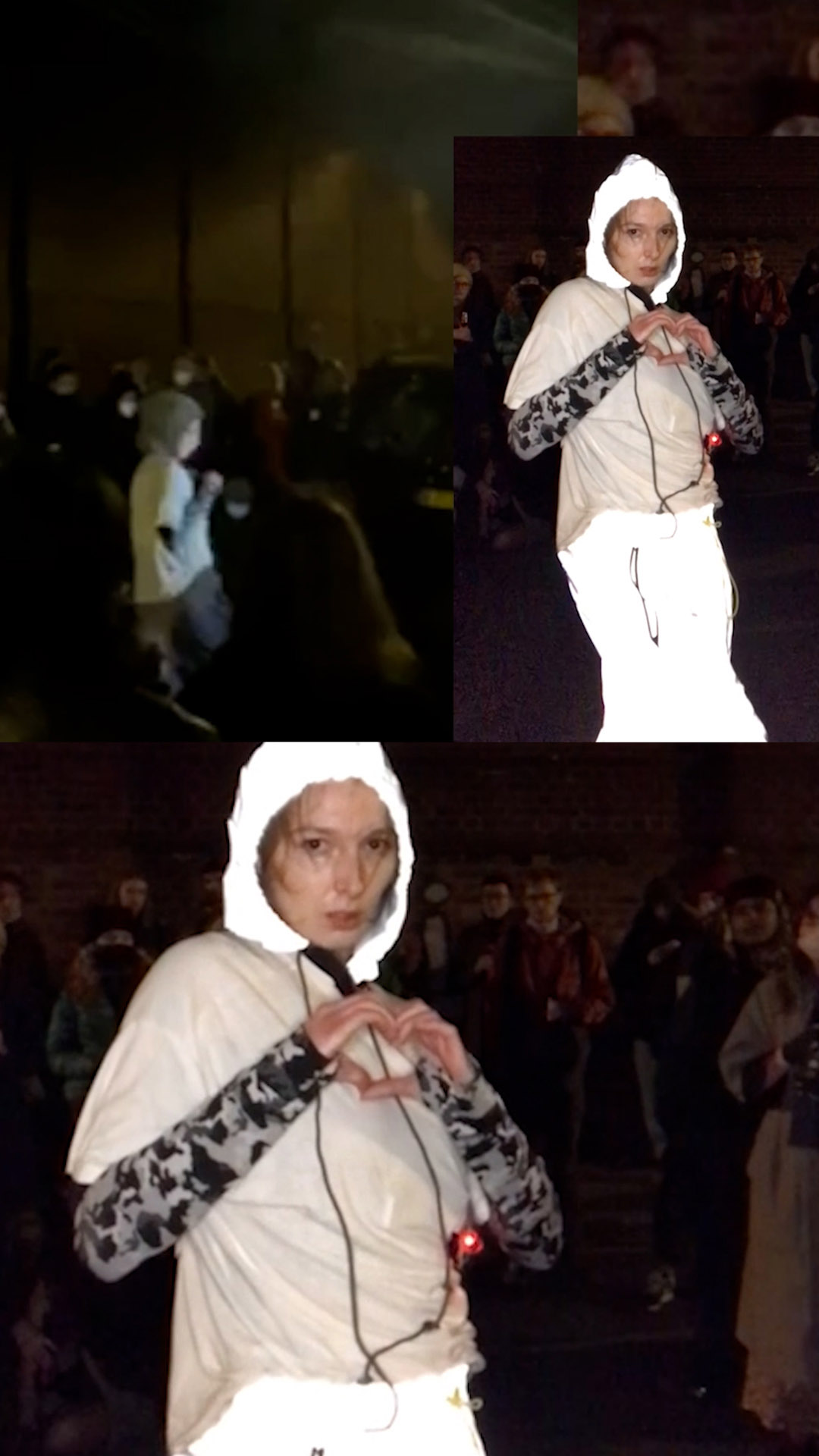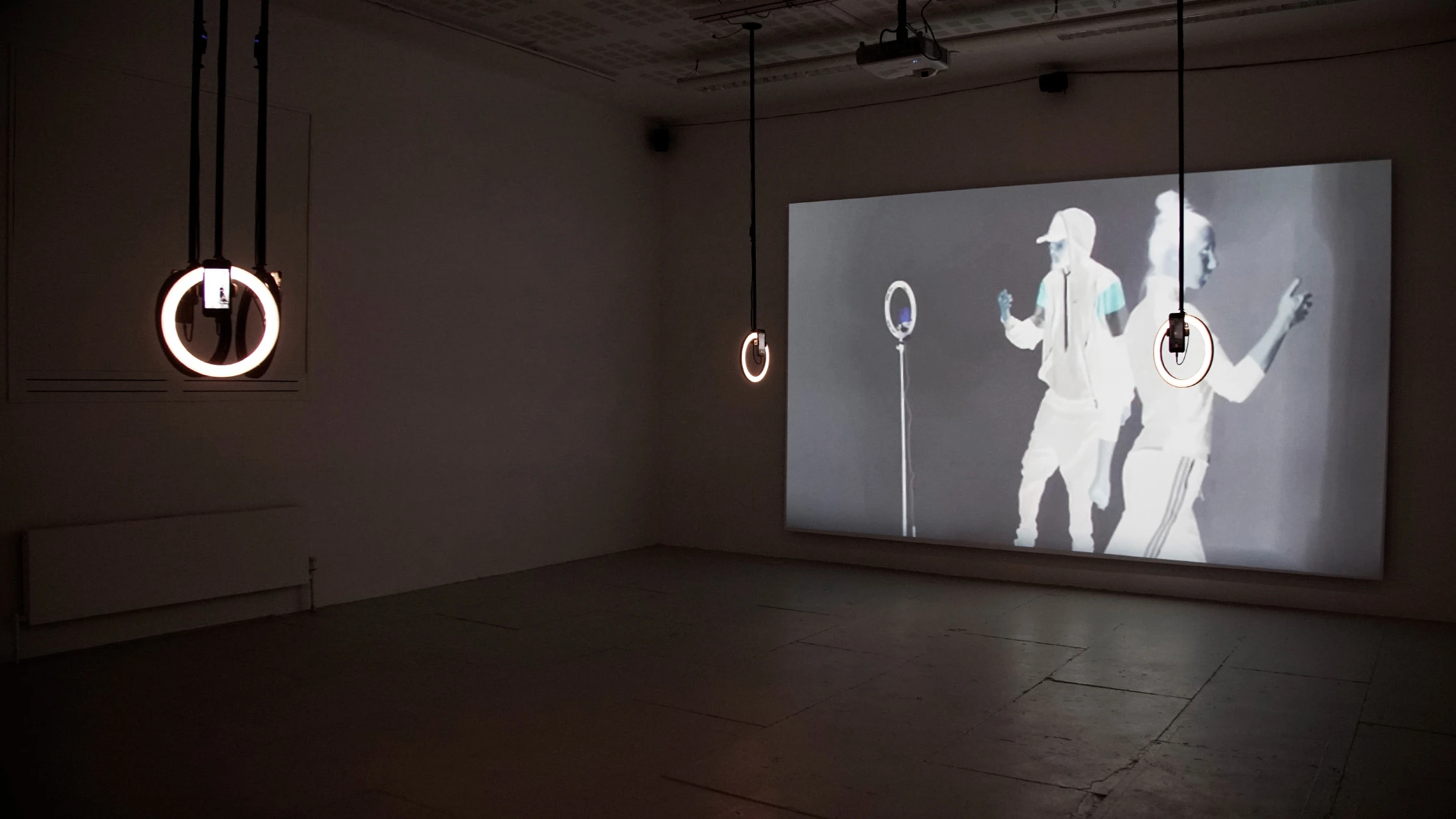
- Date
- 15 MAY 2023
- Author
- VITTORIA MARTINOTTI
- Image by
- @INFLUENTIAL_BRO
- Categories
- Aesthetics
Dancing in the Age of Digital Reproduction with Nina Davies
Nina Davies is an artist who considers the present moment through observing dance in popular culture; how it’s disseminated, circulated, made, and consumed. She recently graduated from Goldsmiths MFA Fine Art where she was awarded the Almacantar Studio Award and the Goldsmiths Junior Fellowship position. Her work has been exhibited and shown at Overmorrow House, Battle, Alchemy Film and Moving Image Festival, Hawick and SEAGER Gallery, London. Nina shared with us some interesting insights on her practice and her plans for the future.
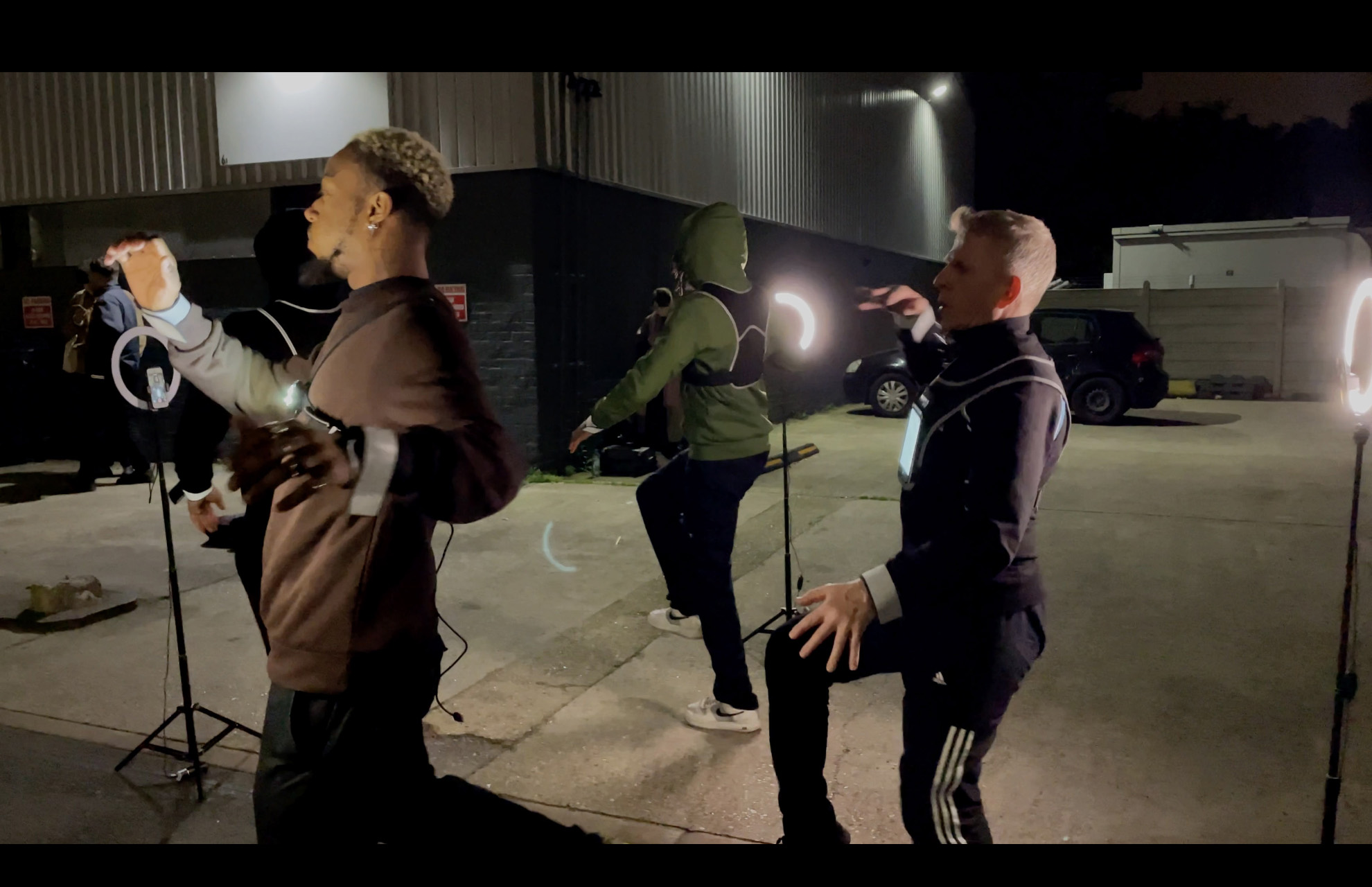
So your work considers the present moment through observing dance in popular culture and how it’s disseminated and consumed. How do you feel that contemporary culture is shaping and possibly changing the whole conception we have of dancing and subsequently the overall idea we have of performativity?
Well, to kick off I think it’s worth saying that dance, for a long time, was not a fully commodified product and this is, in some way, due to not having a standardised form of fixation or recording. In other words, there wasn’t a standardised form to write or record dance in, so it wasn’t used as a commercial commodity. Because of this the study of how dance relates to larger socio-political or socio-economic histories is limited. This is something that has always interested me as an artist with a background in dance… which has stronger links to our understanding of history. An example of this would be that artists, composers and playwriters were included in social studies and history in high school, and this intrinsically links these forms of expression in relation to other events. Dance… in my experience at least, was rarely mentioned (or perhaps not mentioned at all). But this doesn’t mean that dance doesn’t relate to larger events in history, it’s just difficult to study something that cannot be archived or traded. The cultural moment we find ourselves in right now is a moment where new tech affords movement to be captured, archived and traded and dance exists as a cultural object beyond the dancer and beyond the choreographic. And so I think, to answer your question, I guess to me, dance is becoming a quantifiable product and active agent within contemporary culture, on TikTok for example dance plays an important role in the success of a new track… I think I remember reading somewhere that Justin Bieber paid dancers to make choreographic phrases for his new songs. Although this was in like 2020.
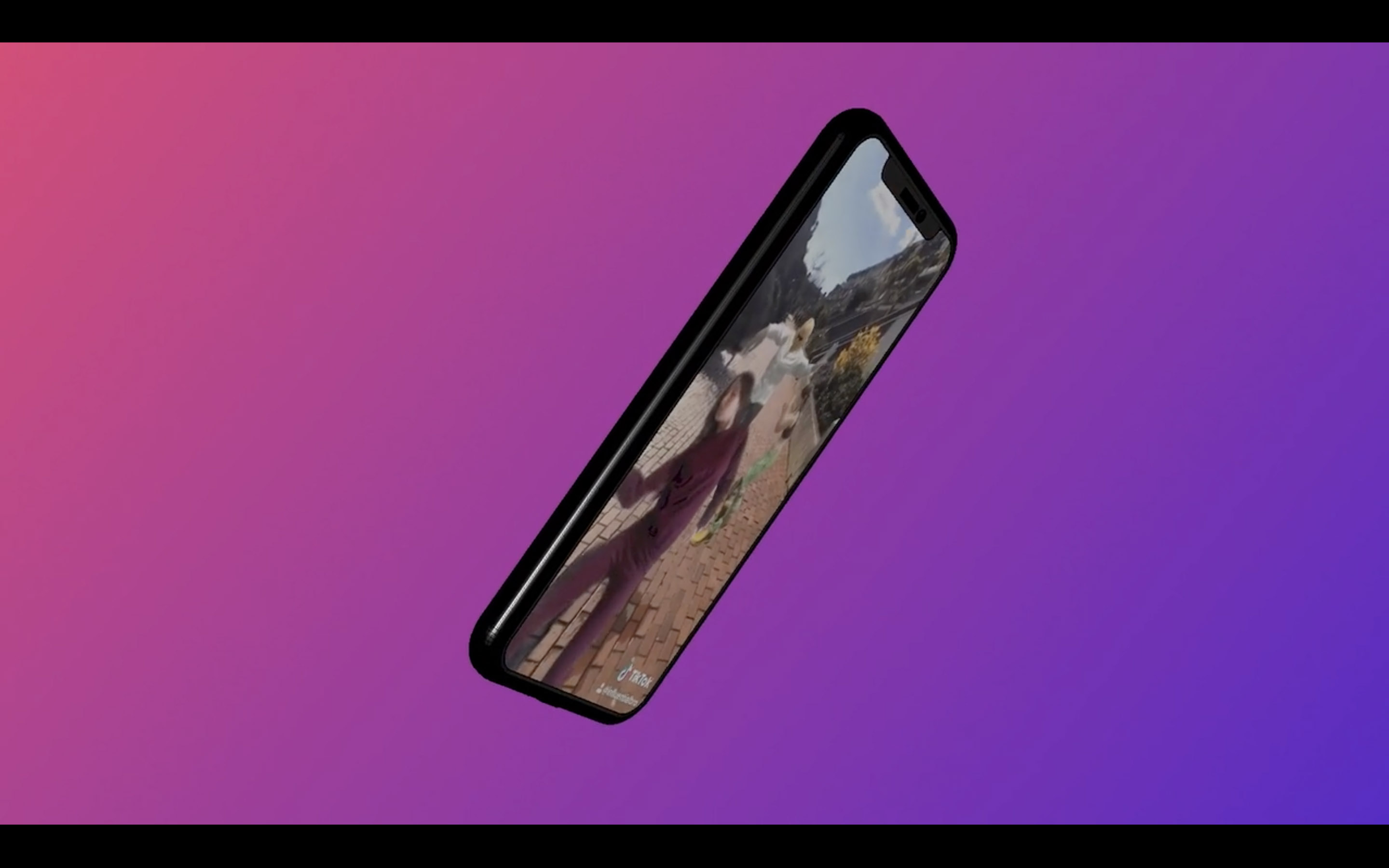
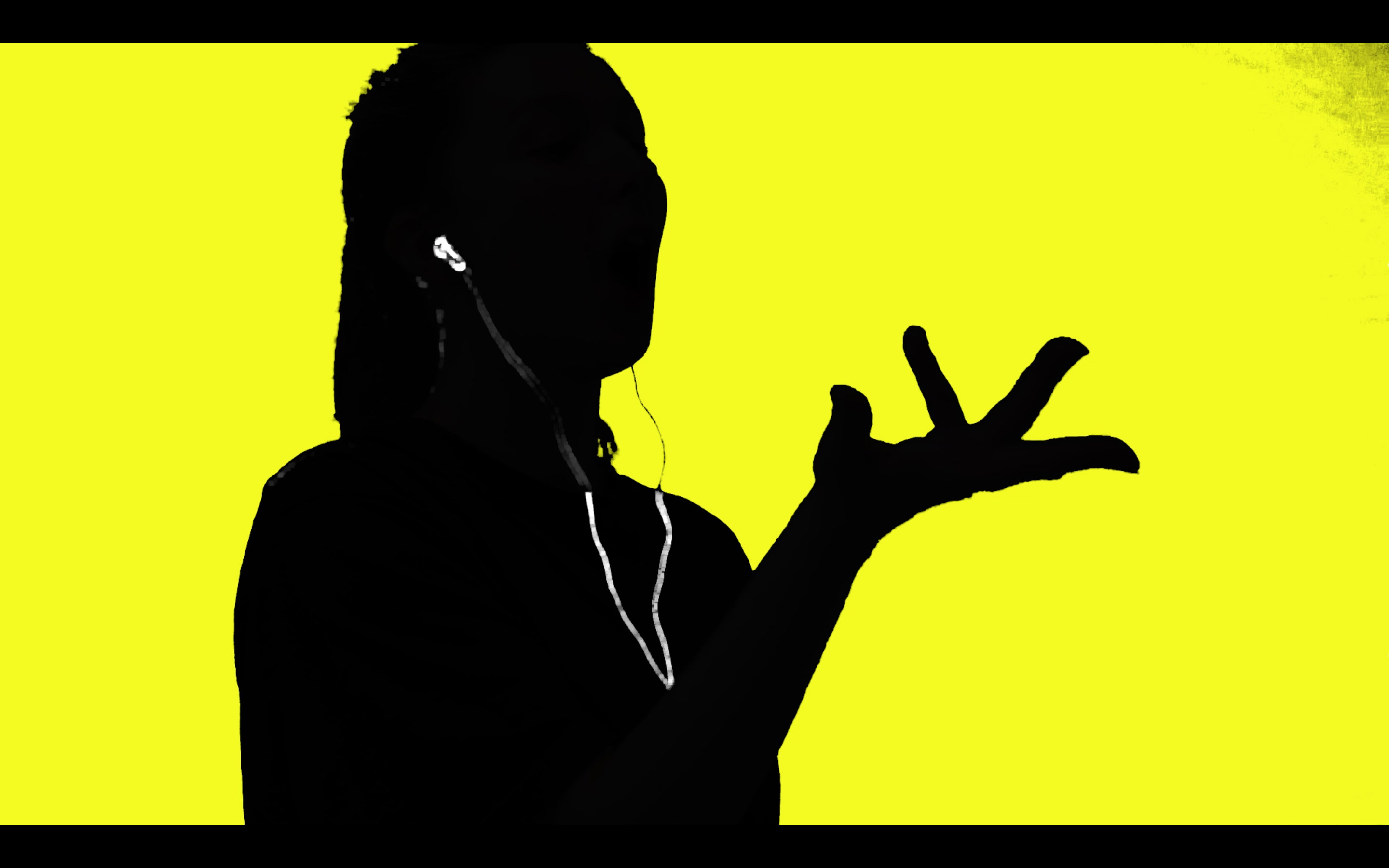
Secondly, I would like to ask you a little more about your practice, you have a peculiar intersectionality that characterizes your work, especially the blend of an extremely physical element like dance and its fruition and portrayal online, as on social media or video games. How do you personally support and facilitate the performative aspect of dancing through online media? And how do you position the two in your work? As complementary or opposite features in your work?
Well, I think the first time I started thinking or questioning dance in online spaces was when Fortnite introduced emotes into their games. I didn’t play Fortnite, but I remember seeing kids on the street performing the emote-like moves, and I thought in some way the digital had made a kind of mark on these movements when being spewed back into the real world. And there are a few conclusions that I’ve drawn from this, one for example, is that it’s clear that they’ve been “bought” in some sort of pseudo-dance market by the kids performing them in the streets. But it’s still something I’m thinking about – this online/physical digesting process of dance.
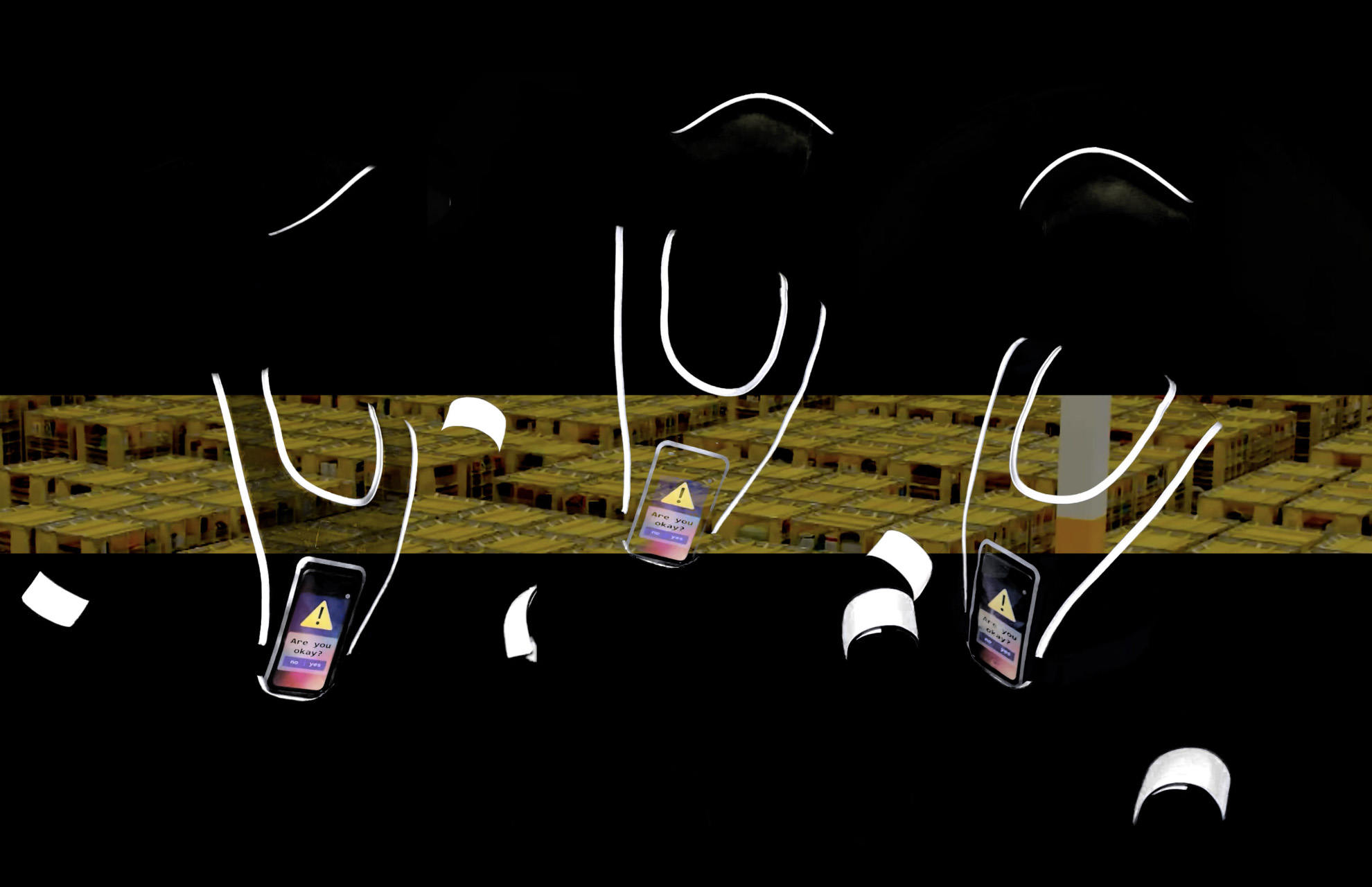
A very interesting aspect that characterizes your work is the visualization and recreation of the dances you portray in your videos. The performers are often placed in front of a ring light holding a phone, often in a triangular or squared disposition, that supposedly records the dancers, resembling the behind-the-scenes of a movie set or a photo shoot. Where did you get this aesthetic from? And why do you show almost only footage from let’s say “outside” the action, meaning that you never really include the footage recorded from the phones placed in front of the performers?
I think I got really used to seeing dancers on TikTok within the portrait phone frame. Sometimes the dancers were in recognisable destinations or in a back alley. At first, I didn’t think about these dance practices beyond these frames until I saw a few dancers in Trafalgar Square with their ring lights on tripods surrounded by loads of people kind of half-watching them. I thought it was really strange because although they were surrounded by hundreds of people, they weren’t performing for them instead they were performing for an online audience. But it’s important to remember that TikTok isn’t the same as Instagram…. where it gets posted to people's feeds that follow you. It gets sent to random people. And so I kind of thought that actually maybe they weren’t really performing for people - online or offline. They were actually performing for algorithms. And so within my work, I really wanted to capture this kind of practice of performing for algorithms.
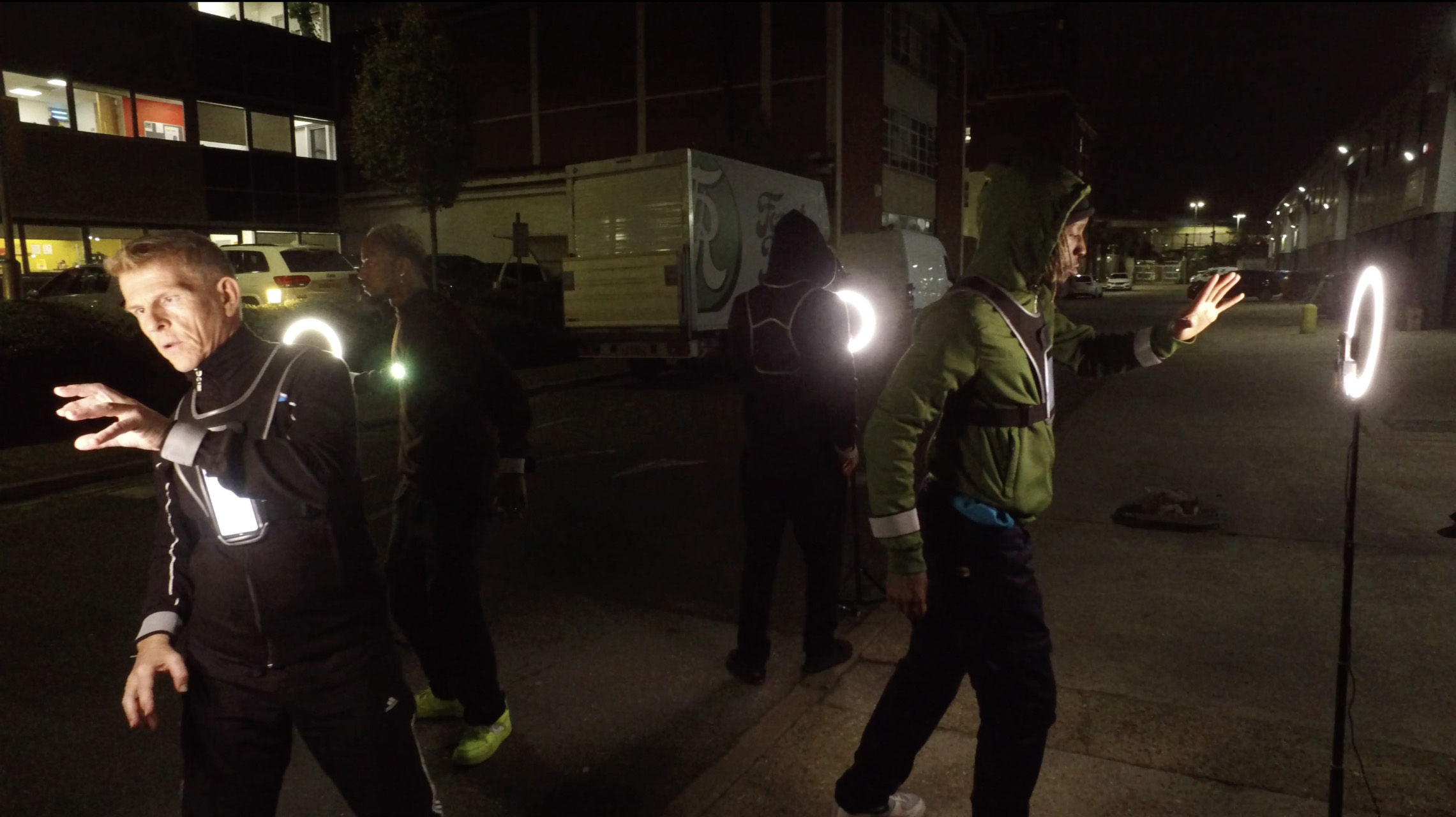
While studying your work you can tell you’re very drawn, with fascination I would say, to aspects such as "techno-faith", human/computer relations, and "cognitive automation services". So I was wondering if you are not only captivated by your research but if sometimes the things you read about and the possible future scenarios you portray in your video also worry you a little?
Well, firstly, techno-faith and cognitive automation services are fictional terms I have made up. But they’re fabricated in close relation to my research. These terms were both made up while I was writing the script for ‘Stepping into Machine’ which is a video work about a fictional traditional dance I made called ‘Bionic Step’. And I guess it might be worth explaining what I mean by fictional traditional dance as it is something I have continued to do within my work, but ‘Bionic Step’ was the first time I did this. So After making my video ‘Express Yourself on the Battlefield’ which was about how dance had become a sellable product through video games, I came across a researcher by the name of Jorge Poveda Yanez who was looking at the same court cases between dancers and Epic Games and also approached the cases from the perspective of traditional dance practitioners.
I got in touch with them and we instantly started working together and eventually co-wrote a paper called ‘Dancing Someone Else’s Movements Through Someone Else’s Body’, which was published in early 2021 (in Dance Articulated, which is a journal published through the Norwegian University of Science and Technology). We both decided that rather than just point out the problem, we’d try to begin thinking about how dancers can regain agency and ownership over their “products” in this new digital economy. Setting out some possible avenues we later decided that we’d try to put these solutions into practice. We initially wanted to work with a traditional dancer, but then we decided that for ethical reasons we would create a fictional traditional dance. I was given an opportunity to make some new work for a project space called Overmorrow House in a UK town called Battle and decided that I would make this fictional traditional dance for this project. To make a fictional dance I had to make an accompanying fictional world.
As Jorge and I needed this dance to be as real as possible I adopted Margaret Atwood’s methods of writing fiction where everything included in the story has happened at some point in history. So I decided to use some dance styles that were emerging on TikTok (particularly the slow-motion walk move) and decided to write about them from a future perspective, a future where these dances have become traditional dances. I started making a fictional map of the world this dance would come from and used the outline of the Great Lakes of North America and inverted it into land. I decided to make the capital what would be Lake St Clair which is where Detroit is. This is kind of where I came up with the idea of cognitive service automation. I thought about the emergence of techno music in Detroit which emulated the sounds of the machines which were taking over jobs. And I thought perhaps this digital style of dancing could be emulating another kind of industrial revolution where office-based work was becoming automated.
I could go into everything that formulated the story, world, and dance… but then we’d be here all day. To come back to your question though, about whether I am worried about these future scenarios… I would say a bit of both. I try in my videos, to present these worlds as a protopia rather than dystopia or utopia, because I want to think of a future that is both hopeful but also something to be weary of.
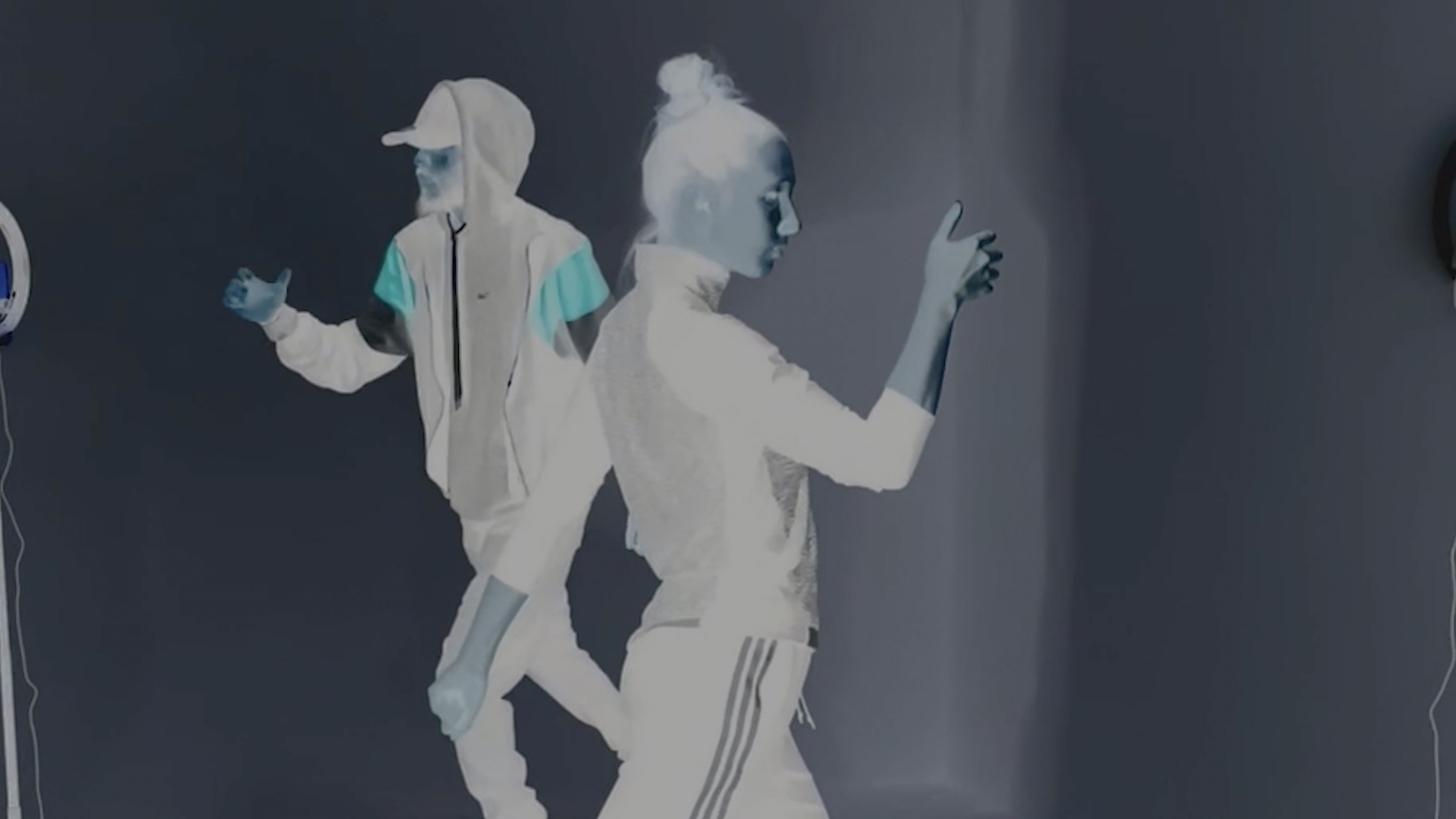
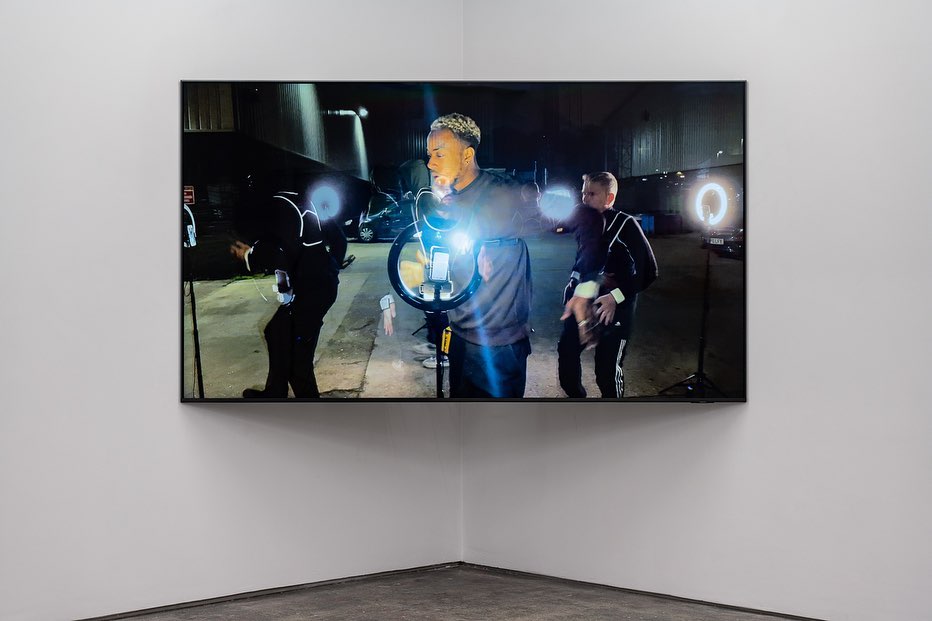
That's really fascinating, how you manage to portray such realistic scenarios in your work, so I would like to discuss further on "Stepping into the Machine" (2022) there you also explore how spiritual practices and rituals, such as the aforementioned dance practice called Bionic Step, indicates significant shifts in our relationship to technology that go beyond questions of mere belief. How would you say that these two aspects are connected and would you say it is a new research aspect you’re delving into and would possibly expand on more in your future projects?
So, when deciding to make a fictional traditional dance, I returned to a few books I had bought from Treadwell’s Books in London about 7 years ago. The books broke down traditional and folk dances that were designated to one of four pillars; spiritual dances, fertility dances, agricultural dances, and dances of war. So I wanted to think about Bionic Step under one of these categories. I decided to write it as a spiritual dance as I also based the script on some research I was doing on the dancing plague which happened in 1518 in Strasbourg. For anyone that might not know what the dancing plague was – it was a summer when the village people of Strasbourg danced until their feet bled and up to 15 people were dying a day from exhaustion. At the time it was referred to as St. Vitus’ Dance and the townspeople thought that they had been left behind by god because the clergy were living in sin, which meant civilians could not repent their sins. I think this relationship - or loss of relationship - to god that the people of Strasbourg had I imagined would be the same for the people performing Bionic Step trying to connect to the government.
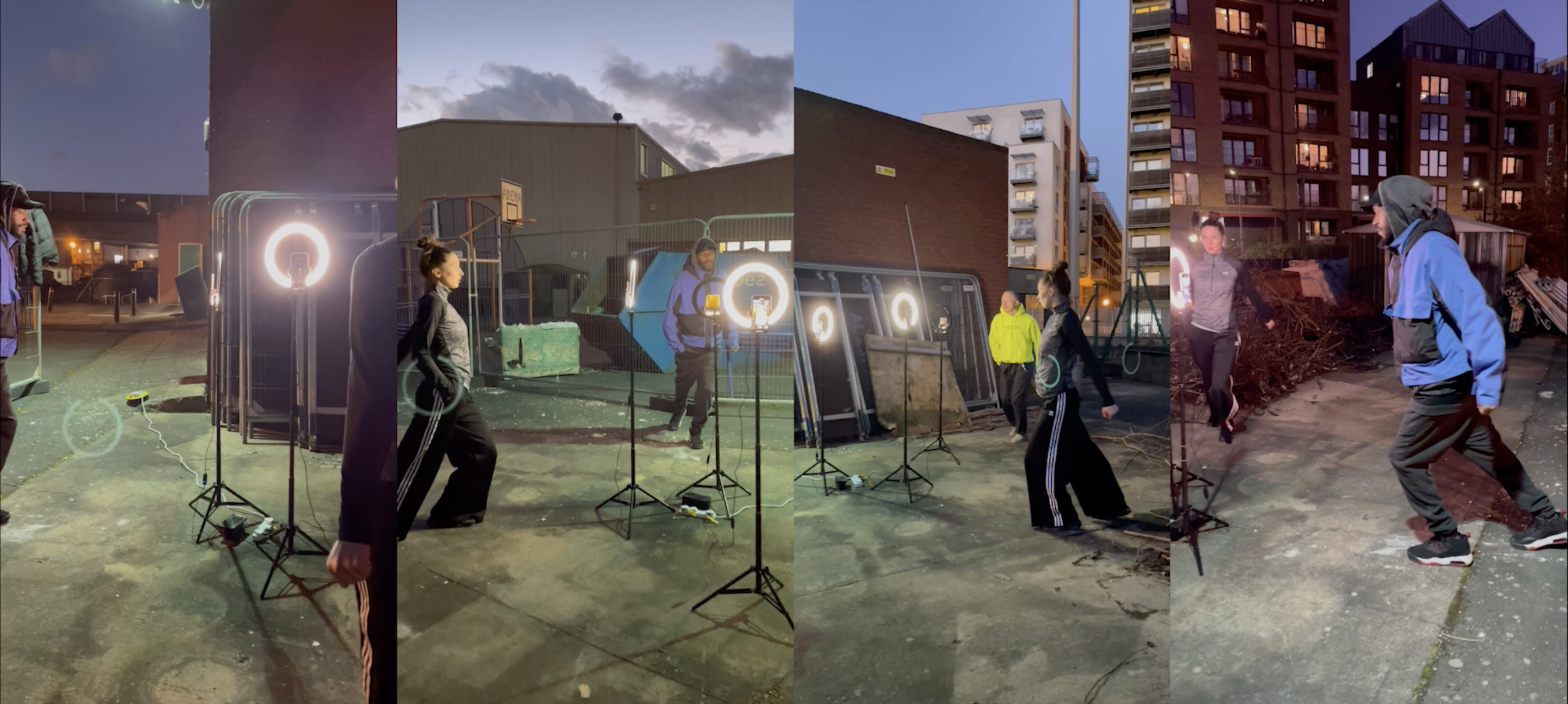
Instead, talking about the future, I would like to speak about Never Let Them Know Your Next Move (2022), in this work you extrapolate existing worries about the gig economy and surveillance capitalism into a hypothetical employment and governance system that commodifies human motion and that could eventually replace human language. Even though all of it is fictitious, it does seem extremely real, something that could happen in the very near future. Therefore I wanted to ask you where the inspiration for this work came from and how did you come up with the “rebellion” tactics that your characters use to confuse but also empathize with the machines? Any real-life events that you might have seen happening somewhere around the world?
Yeah, so this work is a sort of prequel to Stepping Into Machine, I mean I kinda hate the word prequel, but I wanted to expand a little bit on how the people doing Bionic Step might have thought that the dancing would in someway communicate with technical devices. Right before writing the script, I was reading Post-Print by Kathrine Hayles where she writes about defining the human with and against technology. She talks about how humans are now not the only entities that have linguistic capabilities, so this isn’t unique to us anymore. She proposes that to set us apart from techno-linguistic entities we could consider humans enjoy the act of meaning-making. So I guess I wanted to think of this act of Glitch Guising – that the characters do in the film – as a way of meaning-making between machines and humans that don’t belong to any form of semiotics.
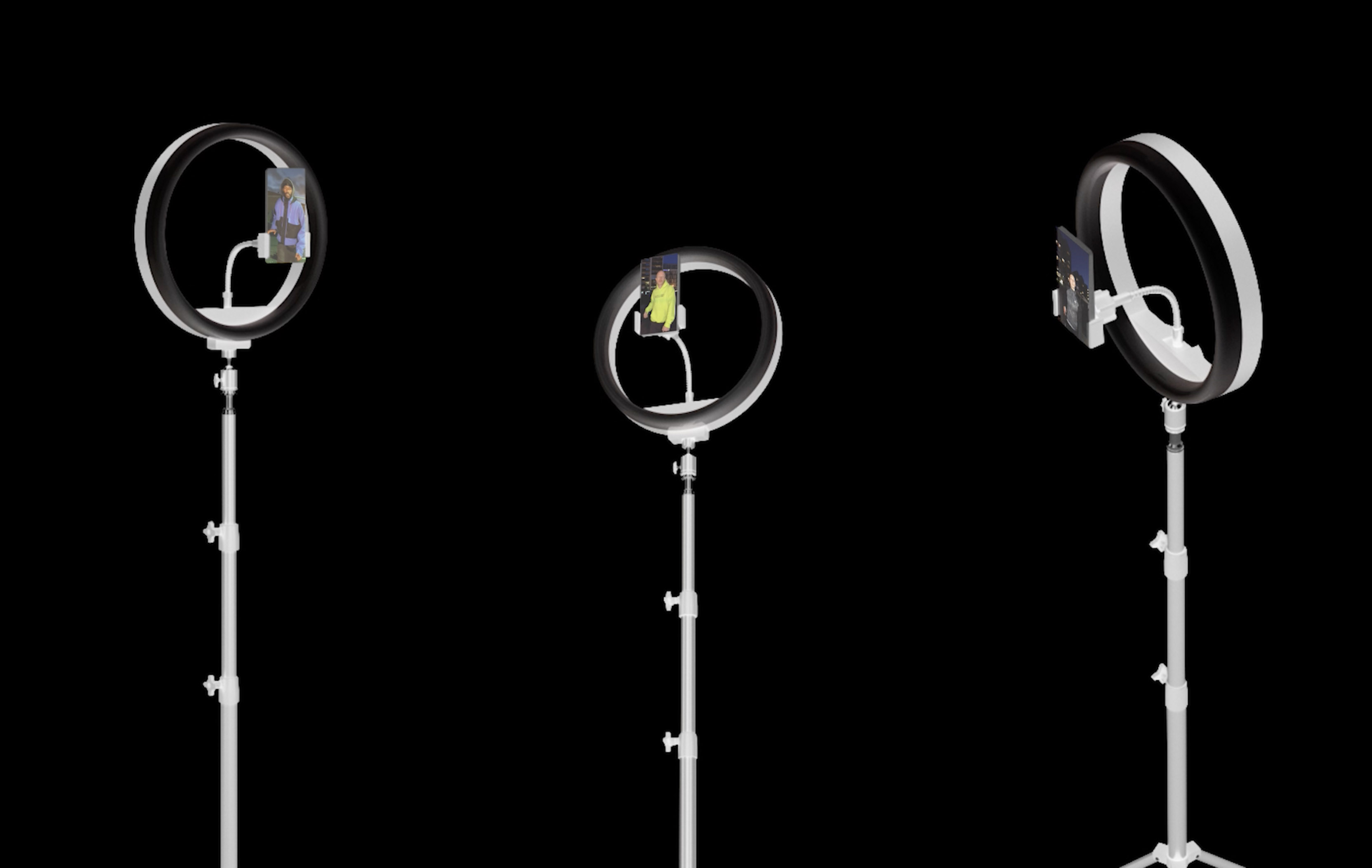
I would like to end this interview by asking once again about the future, can you share with us any exciting project you’re currently working on and where we can expect to see you next?
Yeah, so I’ve been working on a new script which I’m super excited about. Usually, my work starts from a script, then turns into a sound work, video then performance. So it’s early days, but have a few shows and presentations lined up that will follow this work as it progresses. I don’t know when this interview will be published, so this might be out by the time people are reading this – but I’m turning my new script into a sound work that will be featured on a podcast that I co-host with artist Niamh Schmidtke called Future Artefacts FM. So if you’re interested you can tune in to that on Spotify or on RTM.
